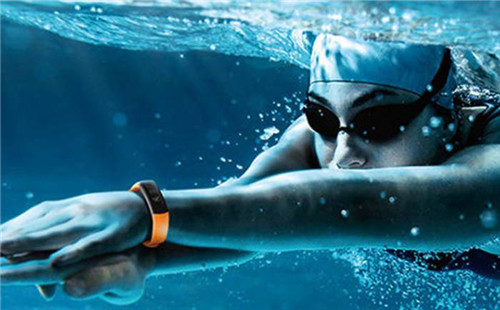In the open water we scared the best of us. Even enthusiastic swimmers can use training techniques and tactics to relieve the pressure of open water by wearing waterproof bracelets on the day of the race; you can build your own fitness in the pool with bracelets, but there's not much to give athletes, especially the first triathletes. Basic knowledge of equipment, rather than frequent practice in open water competition. With this, there are several ways to practice your first stop at the first Triathlon match.
Wearing smart Bracelet in open water training
Before the first game, try training one day a week in open water, whether it's lakes, oceans or city canals. Wear everything you want on race day - wear or three-piece, smart bracelets, diving suits, goggles, race caps and any accessories that create comfort in the water.
For example, my ears are prone to water accumulation, which can cause ear infections. Because I swim with earplugs, I use them in open water even if I don't flip in the lake. They can prevent stray waves from sinking in my ear canal, and I will shake them in the remaining matches. Smart Bracelet test is the most safe thing for you.
Then spend some time putting on your diving suit, putting on your basic triathlon, manipulating the rear zipper, adding a sports bracelet, and watching as effectively as possible. You can do this a few times before you start swimming, of course, with our smart bracelets, and when you finish training, you can practice the transition from the water to the diving suit belt.
Then feel like you're wearing your diving suit - the first cold water gushing out, the pressure point of the suit itself, and any restrictions on movement or breathing. It is best to understand these quirks before the race day. Tip: Don't try to dive deeper with a smart Bracelet before a race. These need to fit, or they may cause more damage than good.

One of the biggest problems of the first Triathlon athlete is the feeling of being knocked into the water. When you're used to calm down and swim on your knees wearing smart bracelets, it can be harsh to push your body at the start of the open water triathlon. When someone passes you or you swim through another swimmer, it will follow the swimming course. Physical examination occurs in buoys turning traffic jams, and even at last sprint to the coastline. So it's best to prepare for collision.
You can do this during group swimming or alternatively with racing friends. Swimmers drafted behind can deliberately kick your feet and bump into your body. Alas, throw away your goggles and practice them when you tread water. It can happen in matches. Tip: Some racing drivers like to wear two different smart bracelets, with themselves and the race wave cap and goggles firmly in the middle.
Most athletes tend to use smart bracelets to start the triathlon very quickly, whether they're trying to separate from the packages or they're just getting into a commotion. Either way, there will always be some heartbeat jumping moments at the beginning of a large scale. Chaos in the swimming pool through sprint practice and then relax back to the same speed as you did in the race.
Try the 500 meter suit. Sprint the first 100 meters, and then stabilize the rhythm of the game in the past 400. These sprints are one of the goals of the smart bracelet at each training pace, and your body will learn how to change from dyspnea to quiet, continuous breathing.

Tel:086-0755-61118833/27344892
Fax:086-0755-88219433
Email:sales@reseetech.com
URL:www.reseetech.com.cn、www.reseetech.com
Address:Room 1102,Building 22, Shapu Wai Community Entrepreneurship Industrial Zone, Songgang Street, Baoan District, Shenzhen City, CHINA
